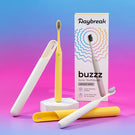In recent years, various studies have underscored the importance of maintaining healthy oral hygiene as a major factor in maintaining our overall health. Bad oral hygiene can not only result in ailments such as tooth decay, halitosis, and gum disease, but can also result in general health disorders like diabetes, strokes, cardiovascular disease, poor pregnancy outcomes, and even dementia.
A study conducted by the American Heart Association found that people with gum disease are at higher risk of developing heart disease than those without gum disease. The bacteria associated with gum disease can enter the bloodstream and cause inflammation, which can lead to the development of atherosclerosis, a condition in which plaque builds up in the arteries and can lead to heart attacks and strokes.
Diabetes is another systemic disease that has been linked to poor oral health. People with diabetes are more susceptible to gum disease, and gum disease can make it harder to control blood sugar levels. A study published in the Journal of Clinical Periodontology found that treating gum disease in people with type 2 diabetes can help improve blood sugar control.
An important aspect of oral hygiene that is often overlooked is interdental cleaning.
What is interdental cleaning?
Interdental cleaning refers to the practice of cleaning the spaces between teeth where a toothbrush cannot reach. These spaces, also known as interdental spaces, are often neglected in routine oral hygiene practices but are important to clean as they can harbour harmful bacteria that can lead to gum disease and tooth decay.
Patients or individuals who are at higher risk such as the elderly, the very young, and those with autoimmune diseases, who are all more prone to infections from oral germs, should pay special attention to cleaning in between their teeth.
How does interdental cleaning work?
The plaque that causes the majority of tooth decay and gum disease can be removed through various interdental hygiene tools, reducing the risk of infections and general health issues. Some of these tools are listed below:
1. Dental Floss
Up to 80% of the interdental biofilm that is 2-3 mm below the gingival margin can be removed with dental floss. Dental floss with built-in threaders and dental threaders can be used to put tape or floss into tight areas. This is an ideal interdental hygiene tool for all individuals including those who have implants, orthodontics, or prosthesis.
2. Interdental Brushes
These brushes are suitable for interdental gaps that range in size from 0.6 mm to 2.2 mm and are medium to wide. In order to avoid damaging the surrounding tissues, it is important to insert the interdental brushes gently.
Go for circular movements to insert the brush into the interdental space from the vestibular (outer) side until it reaches the lingual or palatal (inner) side, at which point horizontal movements can be done. Every time the brush moves from one interdental region to the next, it should be washed.
The brush can be curved so that its tip does not contact the soft tissues on the opposite side and prevent injuring them in the back of the mouth where the vestibular and palatal/lingual tissues are at different levels.
3. Interdental Gels
When applied to the interdental brush filaments, this gel permeates in between the interdental spaces and stops gingival irritation and cavities. It is best to use the interdental brush without a gel at first and then with gel after the area is clear.
4. Oral Irrigators
These are a terrific addition to one’s oral hygiene routine since the stream of water or mouthwash, along with its pulsating motions and pressure, will clear away everything that we have previously dislodged with dental floss or interdental brushes.
To Conclude
To avoid gum disease, tooth decay, infections, cavities, and other dental problems, regular interdental cleaning is absolutely essential. Using advanced, easy-to-use products can make the process of maintaining oral hygiene fun and breezy.
Daybreak brings to you a wide range of biocompatible and toxin-free products that helps you wear that million dollar smile everywhere you go. With the right mix of chemistry and botanics, all our products are made with an evidence-led approach.
If you are trying to build a strong oral hygiene routine, check out our alcohol-free Mouthwash and fluoride and SLS-free Brighten toothpaste.
Reference: NIDDK







